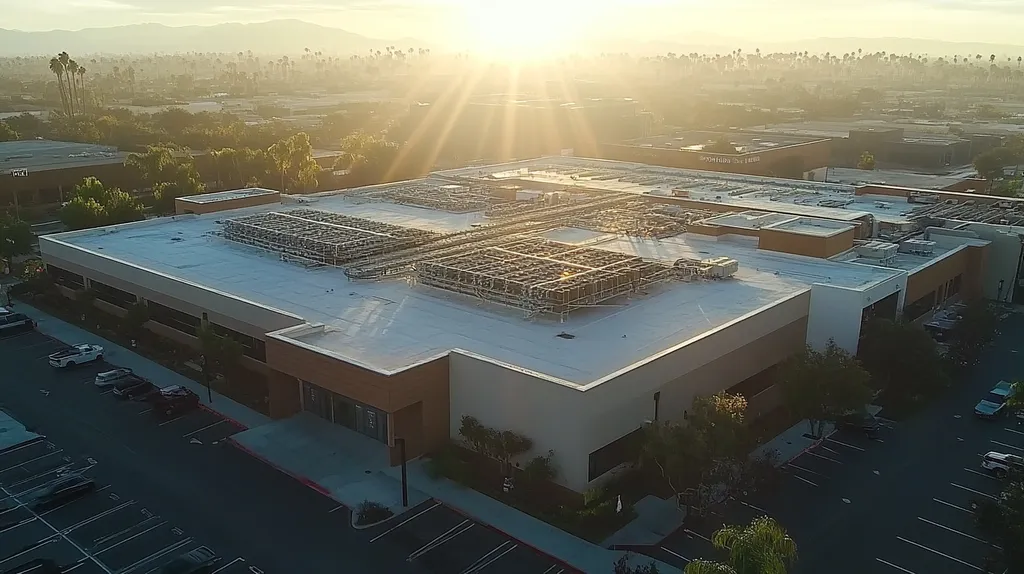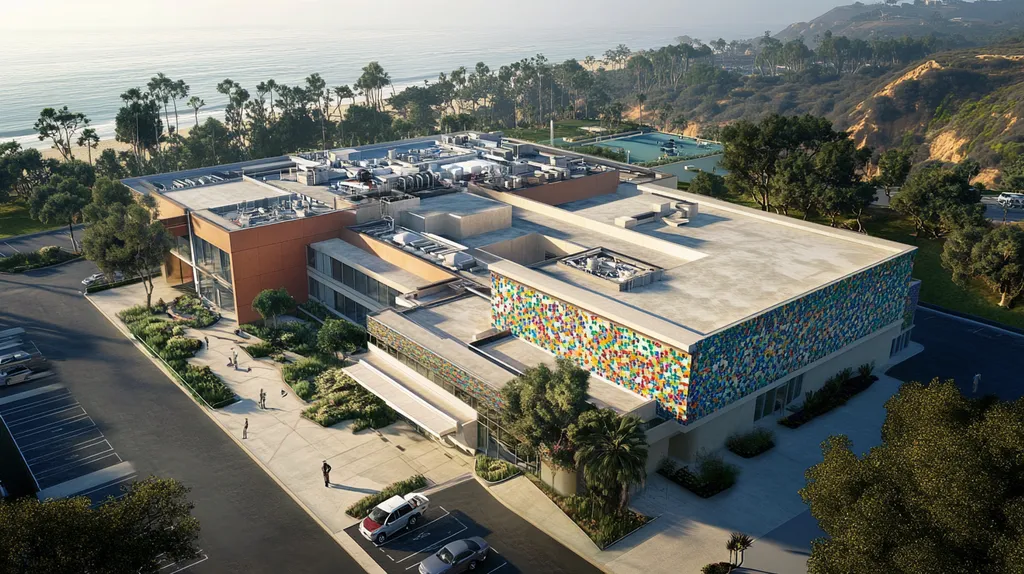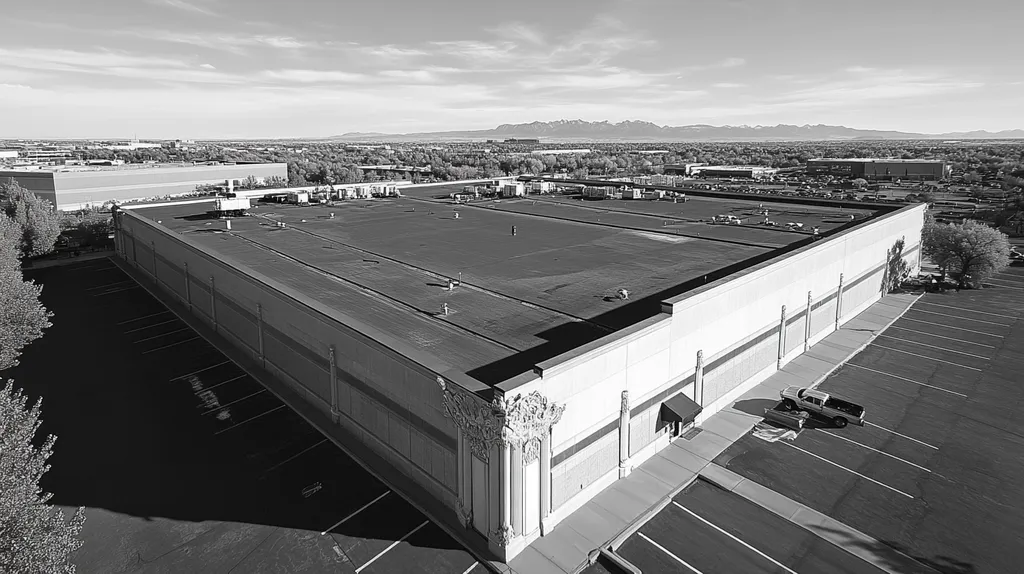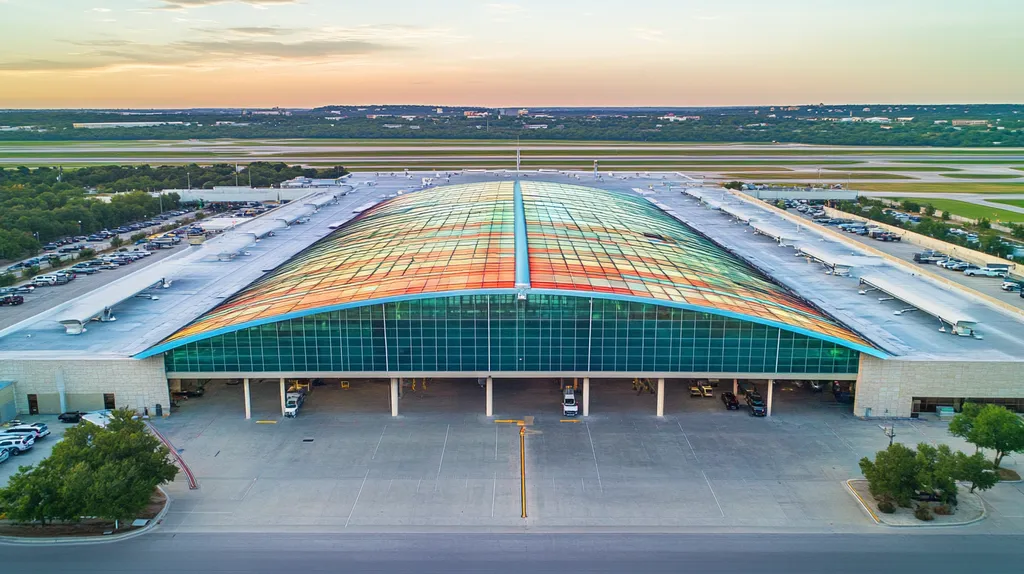Commercial roofing failures due to pest infestations cost U.S. businesses over $5 billion annually in repairs and lost productivity. Recent industry studies reveal that 30% of commercial roofs face premature deterioration from pest-related damage.
For facility managers, selecting and implementing pest-resistant roofing materials has become a critical priority that impacts both structural integrity and bottom-line costs.
This comprehensive guide examines the essential factors in choosing pest-resistant materials, from performance metrics and financial considerations to compliance requirements and long-term maintenance protocols.
SECTION 1: PERFORMANCE FACTORS
When selecting roofing materials, the importance cannot be overstated. Pest infestations can lead to expensive repairs, compromised structures, and potential health risks for occupants. Studies reveal that as many as 30% of commercial buildings face pest-related issues, underscoring the urgent need for effective solutions. By grasping the key performance factors of pest-resistant materials, facility managers can enhance the durability and safety of their commercial roofs. This section delves into material durability, pest and rot resistance, and the influence of weathering and UV exposure.
Material Durability and Lifespan
The durability of roofing materials plays a vital role in supporting a pest-resistant environment. Materials such as metal, EPDM (ethylene propylene diene monomer), and TPO (thermoplastic olefin) provide enhanced resistance to physical wear and pest infiltration. A well-chosen, durable roof can last 20 years or more, significantly lessening the likelihood of costly replacements.
Moreover, high-quality materials are less prone to degradation, which helps prevent gaps where pests might enter. Routine maintenance checks on these robust materials, including assessments of seam integrity and fastener conditions, are essential to maximize their lifespan and performance.
Investing in strong materials is both a wise decision and a sound financial strategy. Long-lasting roofs require fewer repairs, ultimately resulting in lower lifecycle costs. Choosing the right materials can create a more resilient roofing system that safeguards against pests.
It’s imperative for facility managers to select roofing materials that balance durability and cost. Opting for materials with proven longevity minimizes the risks tied to poor performance, ensuring that the roof remains pest-resistant for years to come.
Key Action Items
Resistance to Pests and Rot
The level of resistance to pests and rot varies significantly among roofing materials. Organic options like wood and certain asphalt types are particularly vulnerable to pests such as termites and rodents. In contrast, modern synthetic materials like fiberglass and some composites provide superior pest resistance due to their non-organic nature.
Additionally, employing pest deterrent treatments or coatings can further enhance a roof’s effectiveness. For example, using materials treated with specific pest-resistant technologies can help prevent infestations before they begin.
Facility managers must recognize the differences between material types. Opting for roof systems specifically designed to resist pest invasions can lower maintenance costs and prolong the roof’s service life.
It’s also crucial to understand local pest threats, as different regions have varying pest challenges. Selecting the right materials tailored to local pests can distinguish between a secure roof and persistent pest problems.
Key Action Items
Weathering and UV Resistance
Weathering and UV resistance are critical elements in maintaining a pest-resistant commercial roof. Severe weather and sun exposure can weaken roofing materials over time, creating vulnerabilities that pests may exploit. Roofs that fail to withstand these elements can develop cracks and weak spots that invite moisture and pests.
Notably, UV rays can degrade roofing materials, leading to significant structural deficiencies. Materials designed specifically for UV resistance, such as modified bitumen and reflective coatings, serve as protective barriers against these harmful rays. This not only preserves the material’s integrity but also boosts energy efficiency.
Regular inspections for signs of weather-related damage are vital. Early identification of issues such as blistering or cracking can prevent further degradation and potential pest infestations.
Selecting roofing materials with strong weathering properties empowers facility managers to mitigate future pest threats effectively. Investing in UV-resistant materials ensures that roofing systems endure environmental challenges while retaining their pest-resistant capabilities over time.
Key Action Items
SECTION 2: FINANCIAL CONSIDERATIONS
Choosing pest-resistant materials for commercial roofing has significant financial implications that should not be overlooked. Ignoring the cost of pest-related issues can result in budget overruns and unanticipated expenses. For example, failing to invest in these materials may increase maintenance costs by up to 20% due to pest damage to traditional systems. Understanding these financial factors is crucial for facility managers aiming to make informed roofing decisions.
Initial Installation Costs
Initial installation costs are a key consideration when evaluating pest-resistant roofing options. Specialized materials, such as TPO roofs enhanced with pest-resistant additives, often come with higher upfront costs—typically 10-15% more than standard options. However, these initial expenditures need to be assessed in light of potential long-term savings from fewer pest-related issues.
It’s also important to factor in labor costs; the installation of advanced materials might require skilled labor, which can add to the overall investment. Without careful budgeting, property managers may overlook these expenses, which can impact the project’s financial outcome.
Ultimately, while the initial cost may be higher, the long-term advantages of reduced repairs and maintenance can make these investments worthwhile. A comprehensive understanding of all costs allows facility managers to make strategic financial decisions.
Key Action Items
Long-Term Maintenance Expenses
Pest-resistant materials can significantly impact long-term maintenance expenses. Traditional roofing systems often require frequent inspections and repairs, especially in areas prone to pest issues. For example, standard EPDM roofs can incur substantial ongoing costs due to infestations of insects and animals.
Conversely, pest-resistant roofs can lead to fewer maintenance requirements and allow facility managers to reduce the frequency of inspections, ultimately saving on labor and costs associated with repairs. This savings can accumulate meaningfully over the lifespan of the roof.
Furthermore, selecting durable and pest-resistant materials also extends the overall life of the roofing system, resulting in fewer costly replacements. Understanding long-term maintenance implications is essential for facility managers when evaluating roofing options.
Key Action Items
Cost-Benefit Analysis of Pest Resistance
A thorough cost-benefit analysis is essential for understanding the value of pest-resistant materials. Property owners should evaluate not only the installation costs but also the potential expenses incurred from possible pest damage. For instance, a single infestation can escalate into thousands of dollars in repair costs, depending on its extent.
It’s equally important to consider the costs associated with regular pest control efforts. Ongoing treatments and related repairs can add up quickly, often exceeding the initial investment in pest-resistant materials. By preventing infestations from the start, facility managers will significantly reduce ongoing financial burdens.
Additionally, investing in pest-resistant roofing can enhance property value, leading to greater asset appreciation and making the initial investment more justifiable over time. Properties that incorporate these features may attract higher-quality tenants or buyers, further solidifying the benefits of this investment.
Key Action Items
SECTION 3: COMPLIANCE REQUIREMENTS
Compliance with local building codes is not just a formality for facility managers; it’s essential to the effectiveness of pest-resistant roofing systems. Ignoring these regulations can lead to fines, safety hazards, and decreased property value. Familiarity with the requirements related to pest resistance ensures that chosen materials will not only meet standards but will also provide lasting benefits for the facility. This section outlines the importance of local codes, industry standards, and environmental regulations in guiding informed decision-making.
Local Building Codes and Regulations
Each region has specific building codes that dictate how materials should be used in construction, with many addressing pest management directly. Adhering to these codes is vital for ensuring safety and the longevity of roofing systems.
For example, municipalities might mandate pest-resistant materials, particularly in areas where termite infestations are common. Not following these standards can compromise both structural integrity and occupant safety.
Facility managers should proactively review local codes before starting any roofing project. Engaging with local building officials can clarify regulatory requirements, ensuring that selected materials are compliant with the most recent guidelines.
Key Action Items
Industry Standards for Pest Resistance
Following recognized industry standards not only bolsters pest resistance but also enhances a facility’s overall integrity. Organizations like the American Society for Testing and Materials (ASTM) establish guidelines that define how effective various materials are against pest infiltration. Familiarity with these standards is key to making informed material selections.
The ASTM guidelines for roofing materials outline essential qualities like durability and pest repellence necessary for commercial applications. Adhering to these standards ensures compliance while maximizing the performance and lifespan of roofs.
Facility managers should research certifications associated with pest-resistant materials. Collaborating with certified roofing contractors who understand these standards can optimize the selection and installation processes.
Key Action Items
Environmental Compliance and Sustainability
Aligning pest-resistant material choices with environmental compliance goals is critical for modern facility management. As sustainability becomes increasingly important, selecting eco-friendly pest-resistant materials can fulfill these regulatory requirements.
For instance, utilizing materials that are both pest-resistant and composed of recycled content can elevate a facility’s environmental standing. A solid understanding of environmental regulations facilitates proactive compliance, benefiting both the facility and the community.
Facility managers should also seek certifications like LEED (Leadership in Energy and Environmental Design) that acknowledge sustainable building practices. Incorporating pest-resistant materials that meet these criteria can provide a competitive advantage in the market.
Key Action Items
SECTION 4: RISK MANAGEMENT
Pest infestations can cause severe damage to commercial roofs, leading to costly repairs and decreased property value. The National Pest Management Association reports that around 26% of commercial buildings face pest issues each year. Identifying and managing these risks is crucial to maintaining a roofing system’s integrity and ensuring long-term asset value. This section will detail how to identify potential infestations, assess damage, and mitigate risks through proactive inspections.
Identifying Potential Pest Infestations
Pests often sneak into roofs through unnoticed entry points, which can lead to severe damage if detected late. Facility managers should stay alert for common signs of infestation, including droppings, nests, and visible damage to roofing materials. Additionally, moisture retention from poorly designed drainage systems can attract pests, emphasizing the need to address these issues promptly.
Regular checks around ventilation systems are critical since these areas can provide easy access for rodents and insects. Overhanging branches and shrubs near the building also serve as convenient pathways for pests. Facility managers should be particularly vigilant during seasonal changes when pest activity tends to increase, especially in spring and fall.
Incorporating pest-resistant materials can aid in early detection. For instance, materials like metal flashing or synthetic membranes are less likely to attract pests, providing a physical barrier while facilitating easier inspections. Establishing a routine monitoring schedule reinforces pest management efforts and working with pest control professionals ensures potential issues are identified before escalating into significant problems.
Key Action Items
Assessing Damage from Pests and Rot
Assessing damage caused by pests is paramount for prioritizing repairs and avoiding costly, long-term consequences. Pests like termites and rodents can severely compromise the structural integrity of a roof, leading to expensive repairs. Additionally, roof rot, which is often exacerbated by water retention, requires immediate attention to prevent escalating damage.
Once signs of infestation have been identified, it is critical to perform a thorough assessment of the roof’s condition. This process may involve examining underlying structures, insulation, and any damage to roofing materials. Often, damage remains hidden until it becomes significant, resulting in unexpected repair costs.
Facility managers should document assessments meticulously and maintain records of all findings, guiding strategic planning and funding for necessary repairs. Collaborating with a professional roofing contractor provides valuable insights into the extent of the damage and the best course of action moving forward. Immediate action can help mitigate further risks, avoiding larger issues and ensuring the safety of building occupants.
Key Action Items
Mitigating Risks with Regular Inspections
Regular inspections form the backbone of effective risk management for commercial roofs. Setting a routine inspection schedule can help catch early signs of pest activity and material deterioration. Utilizing qualified roofing professionals enhances the detection process due to their expertise and specialized tools.
Inspections should pay particular attention to vulnerable areas, such as seams, penetrations, and transitions where pests often gain access. Additional focus on moisture retention areas and organic material build-up is also crucial, as a clean roof minimizes pest habitats.
Facility managers must adapt inspection schedules according to seasonal changes. Certain pests are more active during specific times of the year, making heightened observation during these periods vital. This proactive stance can prevent minor issues from evolving into costly problems. Partnering with pest management professionals offers further insights and tailored solutions, integrating pest-resistant materials into overall roofing plans for enhanced protection.
Key Action Items
SECTION 5: OPERATIONAL PROCEDURES
Implementing effective operational procedures is essential for maximizing the lifespan and effectiveness of pest-resistant roofing materials. Without proper installation and diligent maintenance, the advantages of these materials can significantly diminish. Research shows that poorly installed roofs are prone to moisture accumulation, creating a perfect environment for pests. Facility managers must focus on best installation practices, routine inspections, and timely repairs to protect their roofs from infestations.
Installation Best Practices for Pest-Resistant Materials
Installing pest-resistant materials demands meticulous attention to detail to ensure optimal performance. Choosing the right materials, such as modified bitumen or advanced synthetic membranes, is crucial for effective pest resistance. Each installation should be executed by certified professionals who are knowledgeable about the specific requirements of pest-proof roofing.
To enhance effectiveness, installing barriers like insect mesh can prevent pests from gaining access to roof spaces. Properly sealing all joints and penetrations is vital, as these are common entry points for pests. Conducting thorough inspections during the installation phase will identify potential weaknesses early on.
Additionally, coordinating with other contractors ensures that installations are done without leaving gaps that could invite pests. The aim is to build a cohesive roofing system that limits pest entry while promoting durability. Using a detailed checklist during the installation process can help staff maintain focus and accountability, laying a strong foundation for a pest-resistant roof.
Key Action Items
Routine Maintenance and Inspection Protocols
Establishing a routine maintenance schedule is vital for preserving the integrity of pest-resistant materials. Facility managers should conduct periodic inspections—ideally every six months—to detect any wear, damage, or signs of pest activity. Seasonal inspections before and after severe weather are particularly effective in identifying potential issues early.
Focus areas during inspections include seams and penetrations, as these are common infiltration points for pests. Regularly clearing roofs of debris—like leaves and branches—will reduce organic matter that can attract pests. Equally important is maintaining drainage systems, as standing water is a breeding ground for insects.
Maintenance personnel should be trained to recognize early signs of pest activity, such as droppings or nests. Promptly reporting these findings allows swift action to eliminate potential problems. Maintaining a log of inspections and repairs will help teams identify recurring issues and fine-tune maintenance strategies for the future.
Key Action Items
Repair and Replacement Procedures
Addressing needed repairs and replacements promptly is essential for sustaining a pest-resistant roof. Facility managers should act quickly when issues are discovered during inspections; delays can exacerbate problems and lead to increased pest vulnerabilities. For instance, small leaks can create easy access points for pests if left unaddressed.
Using high-quality materials for any repairs not only resolves immediate concerns but also enhances the overall pest resistance of the roof. Implementing appropriate sealants and patching techniques is crucial for maintaining structural integrity. Proactive replacement of severely worn or damaged sections can prevent the need for major repairs later.
Facility managers should also have a protocol in place for managing pest infestations that arise, despite preventive measures. Engaging pest control experts will enable swift management of infestations while assessing any damage to the roofing system. Regularly evaluating repair costs against prompt action reinforces the idea that preventive maintenance saves money in the long term.
Key Action Items
SECTION 5: OPERATIONAL PROCEDURES
Effective operational procedures are vital for ensuring the longevity and effectiveness of pest-resistant roofing materials. Without proper installation and maintenance, the benefits of these materials can easily fade. Research shows that poorly installed roofs may lead to moisture accumulation, creating ideal conditions for pest infestations. Facility managers must prioritize best installation practices, regular inspections, and timely repairs to protect roofs from pests.
Installation Best Practices for Pest-Resistant Materials
Installing pest-resistant materials requires careful attention to detail to maximize performance. It begins with selecting the best materials, such as modified bitumen or certain synthetic membranes known for their pest-repellent qualities. Certified professionals should handle installations to ensure they adhere to pest resistance standards.
Incorporating barriers like insect mesh during installation can block pests from accessing the roof. Properly sealing joints and penetrations is critical, as these are common entry points. Conducting thorough inspections throughout the installation process can identify potential weaknesses that might compromise the roof.
Additionally, working closely with other contractors ensures that installations are executed without creating gaps that could invite pests. For instance, overlapping HVAC installations must be done carefully to maintain the roof’s integrity. A comprehensive installation checklist can help guide staff, ensuring no detail is overlooked and establishing a solid foundation for pest-resistant roofing.
Key Action Items
Routine Maintenance and Inspection Protocols
Establishing a routine maintenance schedule is essential for preserving the integrity of pest-resistant materials. Facility managers should plan periodic inspections, ideally every six months, to detect signs of wear, damage, or pest activity. Seasonal inspections, particularly before and after extreme weather, can reveal vulnerabilities.
During inspections, checking around penetrations and seams is crucial, as these are common areas where pests can enter. Regularly clearing roofs of debris, such as leaves and branches, is essential to minimize organic matter that attracts pests. Maintaining effective drainage systems is also vital, as standing water can become a breeding ground for insects.
Maintenance personnel should be trained to recognize early indicators of pest activity, such as droppings or nesting materials. Promptly reporting these findings allows for swift action to mitigate problems. Keeping a log of inspections and repairs helps identify recurring issues and refine maintenance strategies over time.
Key Action Items
Repair and Replacement Procedures
Timely repairs and replacements are vital for maintaining a pest-resistant roof. Facility managers should respond quickly to issues identified during inspections, as delays can lead to more significant problems. For example, small leaks can easily provide entry points for pests if left unattended.
Utilizing high-quality materials for repairs not only addresses immediate issues but reinforces the overall pest resistance of the roof. Appropriate sealants and patching methods are crucial for maintaining the roof’s integrity. Proactively replacing severely worn or damaged sections prevents the need for more extensive repairs in the future.
Facility managers should also develop a protocol for managing potential pest infestations, even with preventive measures in place. Engaging pest control professionals can facilitate swift management of infestations while assessing any damage to the roofing system. Regularly comparing repair costs to the benefits of prompt maintenance reinforces the importance of proactive actions.
Key Action Items
The Bottom Line
With pest-related roofing damage costing U.S. businesses over $5 billion annually, implementing effective pest-resistant materials is no longer optional—it’s essential for protecting commercial assets.
Research demonstrates that buildings utilizing pest-resistant roofing materials experience 70% fewer infestations and require 40% less maintenance over their lifespans.
Success depends on selecting appropriate materials, ensuring proper installation, and maintaining rigorous inspection protocols.
Facility managers who prioritize pest resistance in their roofing systems consistently report reduced repair costs, enhanced building protection, and improved tenant satisfaction.
As construction technology advances and environmental pressures increase, pest-resistant roofing will become an even more critical component of effective facility management strategies.
FREQUENTLY ASKED QUESTIONS
Q. What performance factors should I consider for a commercial roof?
A. Focus on material durability, pest resistance, and weathering effects. High-quality materials, such as metal or EPDM, resist wear and prevent gaps that pests exploit. Regular checks on seams and fasteners extend the lifespan of your roofing system.
Q. How do financial aspects impact industrial roofs?
A. Initial costs may be higher for pest-resistant roofs, but long-term savings are significant. Consider installation expenses and ongoing maintenance; pest-related repairs can add up quickly. Evaluating these financial factors aids in making informed choices.
Q. Are there compliance requirements for commercial roofing?
A. Yes, adhering to local building codes is vital. These regulations often mandate pest-resistant materials, especially in pest-prone areas. Engaging with local officials ensures compliance, enhancing safety and integrity while preventing potential fines.
Q. How can I manage pest risks on my industrial roof?
A. Regular inspections are crucial for identifying potential pest entry points and damage signs. Look for droppings, nests, and moisture retention. Utilizing pest-resistant materials simplifies monitoring and reduces the likelihood of infestations.
Q. What are the best installation practices for commercial roofs?
A. Use certified professionals for installation of pest-resistant materials. Prioritize sealing vulnerabilities and install physical barriers like insect mesh. Thorough inspections during installation help identify potential issues early, ensuring roof longevity and protection.
Q. What maintenance protocols are recommended for pest-resistant roofs?
A. Schedule regular inspections and remove debris to minimize pest attraction. Focus on seams and drainage systems, as standing water breeds pests. Logging inspection findings enables adjustments to your maintenance strategy over time.
Q. How do I handle emergent pest infestations?
A. Act quickly to identify and manage infestations, using professional pest control services when necessary. Evaluate any damage to the roof thoroughly. Collaborating with experts ensures effective solutions, helping to mitigate risks and future infestations.











